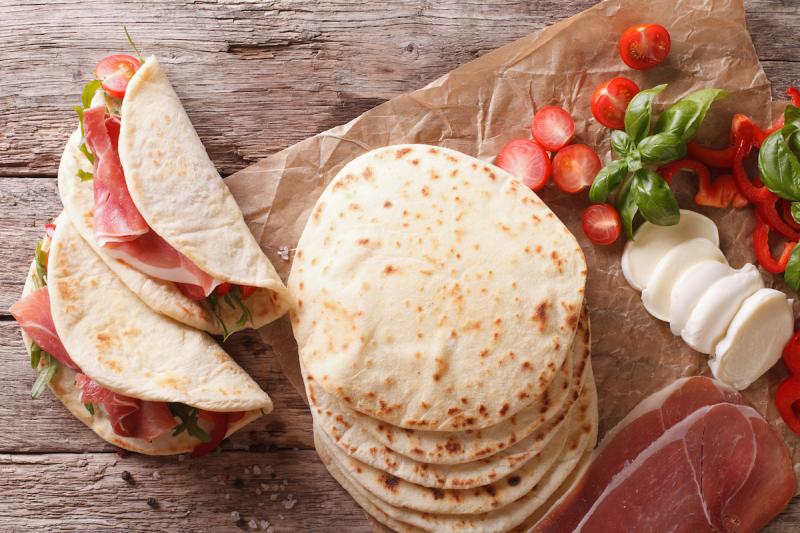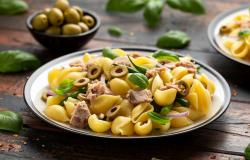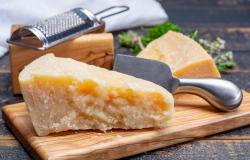Great Foods of Italy: Piadina
ITA:

Use player to listen to Italian version

Paywall Content
One of Italy’s most popular street foods, piadina is unleavened flat bread that hails from the region of Romagna. Made with white wheat flour, lard (or olive oil for a lighter version), salt and water, it is typically filled with ham, creamy squacquerone or stracchino cheeses, and arugula.
It is thought that piadina originated in Roman times, although the first written evidence of piadina as it is made today dates to 1371, when Cardinal Anglico provided the recipe for the “bread of the people of Romagna” in the Descriptio Romandiolae.
The great Italian poet Giovanni Pascoli, who was born in San Mauro di Romagna, popularized the word piada, describing it as the “bread, no, the national food of the Romagnoli”.
In the past, piadina was a household staple made at home in Romagna by arzdore (housewives in the local dialect). These days, you’ll easily find it at one of Romagna's many piadinerie or roadside piadina kiosks to satisfy beachgoers' demands for a cheap and satisfying meal.
Piadina now even has Protected Geographic Indication status (IGP in Italian or PGI in English) to safeguard it from poor quality imitations and fakes. It means that piadina is recognized for its importance as a traditional and quality food.
The IGP designation, along with the even stricter Denomination of Origin (DOP in Italian or PDO in English) trademark, is used to protect some of Italy's most iconic products, such as Parmigiano Reggiano and balsamic vinegar, which are also typical of the Emilia Romagna region.
Check out our recipe for piadina.
Uno dei cibi di strada più apprezzati d'Italia, la piadina è un pane non lievitato originario della Romagna. A base di farina di grano bianco, strutto (o olio d'oliva per una versione più leggera), sale e acqua, è tipicamente farcito con prosciutto, formaggio cremoso come squacquerone o stracchino e rucola.
Si pensa che la piadina abbia avuto origine in epoca romana, anche se le prime testimonianze scritte della piadina così com'è fatta oggi risalgono al 1371, quando il cardinale An
Or, try Premium FREE for 30 days
Your support directly funds on-the-ground reporting from Italy (and the occasional aperitivo for our talented writers).
It’s all to bring you authentic Italy.
Join us.
Already a member? Sign in here.











